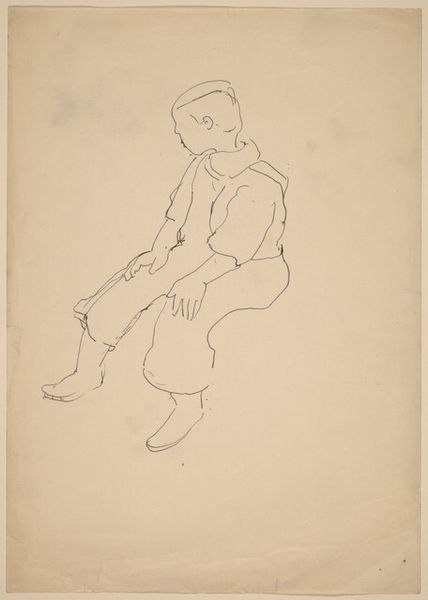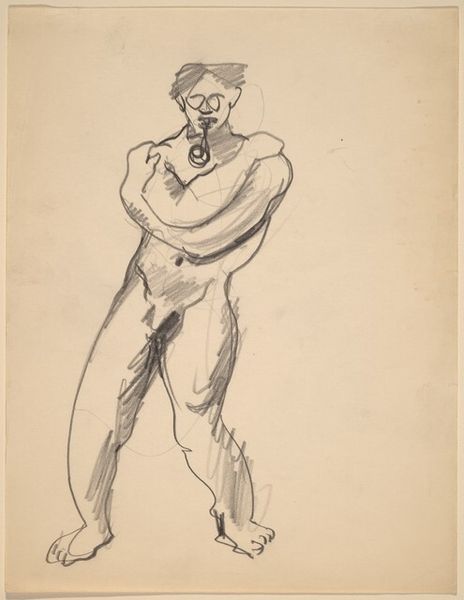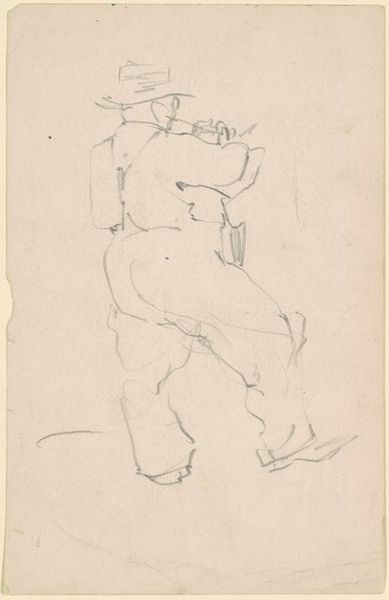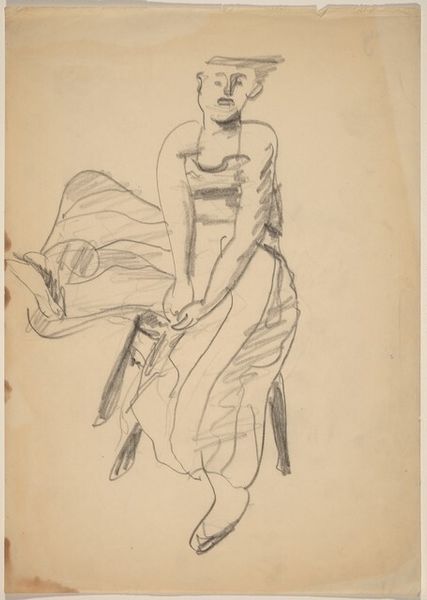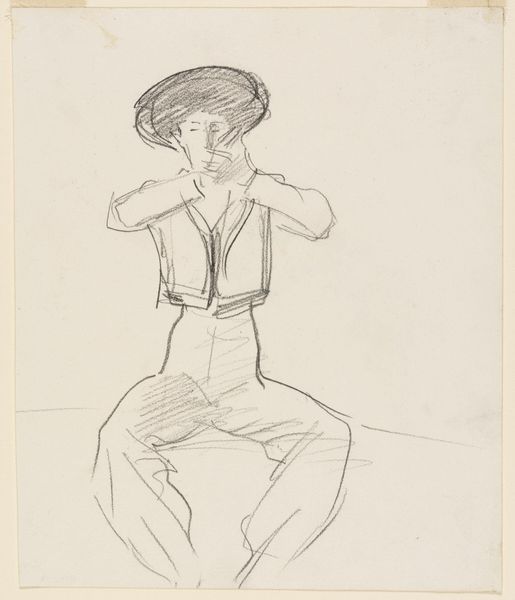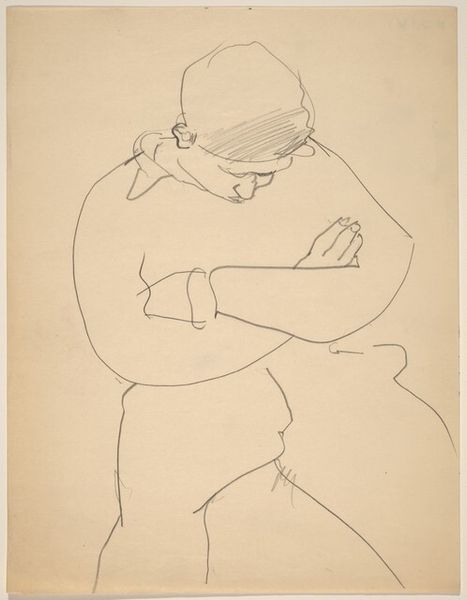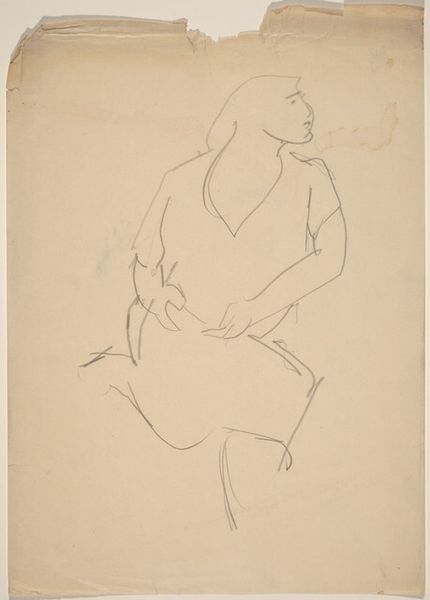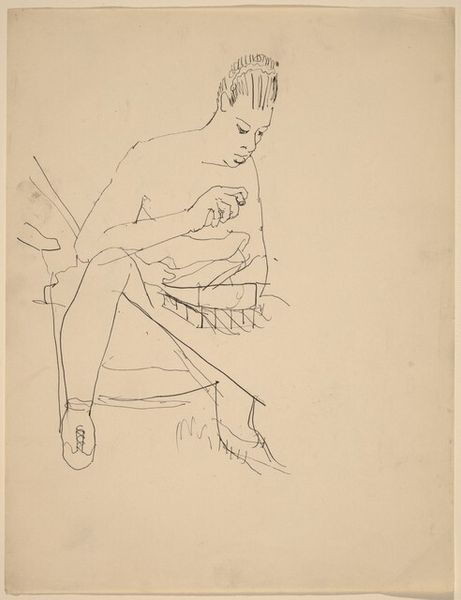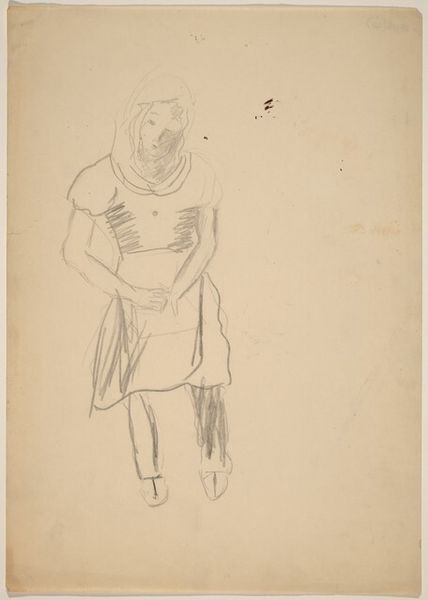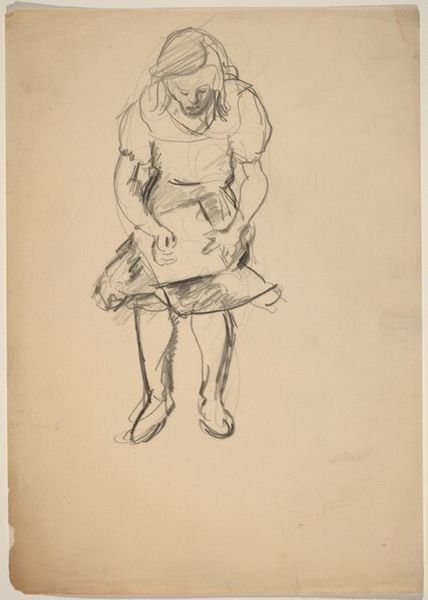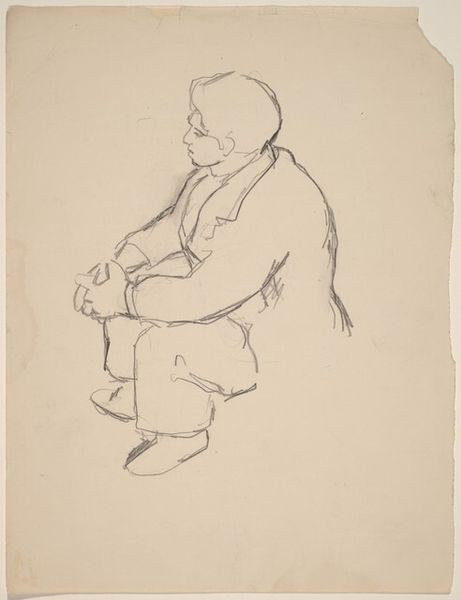
drawing, pen
#
portrait
#
drawing
#
imaginative character sketch
#
light pencil work
#
ink drawing
#
pencil sketch
#
figuration
#
personal sketchbook
#
idea generation sketch
#
ink drawing experimentation
#
pen-ink sketch
#
line
#
sketchbook drawing
#
pen
#
pencil work
Copyright: National Gallery of Art: CC0 1.0
Editor: Here we have "Boy Standing with Lute," a pen and ink drawing attributed to Mark Rothko. The lines are so sparse, yet they manage to capture a figure holding an instrument. What stands out to you about it? Curator: What intrigues me are the marks themselves, and the labor inherent in their creation. This isn't a finished masterpiece but an exercise. Think about Rothko's access to materials, the cost of ink and paper, even the time available to him. These elements shape not just the image, but our understanding of its value. Is it a commodity, or a study? Editor: That's interesting. I was focusing more on the boy's posture, and the simplicity of the composition. Are you saying the real subject is the *making* of art, rather than the boy? Curator: Precisely. The act of drawing, the consumption of materials, and Rothko's own position within a system that allows him to create... It's all intertwined. How does this casual sketch differ, materially and conceptually, from the canvases he’s better known for? Think about the intended audience, the purpose of production, and the economy surrounding both. Editor: So you’re suggesting we look at it as evidence of his process, tied to the economics of artistic creation. A window into his labor, rather than a window into a scene. Curator: Yes. We often separate 'high art' from craft, but here, we see Rothko engaging with the fundamental act of mark-making, a process shared by countless makers across time and cultures. This connects him, materially, to a much broader history of labor. Editor: I never considered approaching a drawing in this manner, seeing it less as a finished product and more as a document of the artist's engagement with materials. Curator: Exactly. It’s a reminder to consider not just *what* we see, but *how* and *why* it was made.
Comments
No comments
Be the first to comment and join the conversation on the ultimate creative platform.

